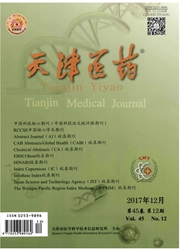

 中文摘要:
中文摘要:
目的:探究激活态雪旺细胞(ASC)、非激活态雪旺细胞(SC)与生物可降解聚己内酯(PCL)支架的生物相容性。方法:实验组由结扎7 d Wistar大鼠坐骨神经提取激活态雪旺细胞,对照组由未结扎大鼠坐骨神经提取非激活态雪旺细胞。将细胞分别种植在PCL支架上,通过CCK-8检测细胞增殖活性,通过结晶紫观察细胞分布,激光共聚焦显微镜观察细胞形态和功能表达。结果:ASC与SC相比S-100阳性率无明显差异;PCL支架上ASC增殖率明显高于SC;ASC能够贴附PCL纤维生长,可沿纤维长轴分布,进入支架内部,并且表达髓鞘碱性蛋白(MBP)。结论:激活态雪旺细胞比非激活态雪旺细胞能够更好地在PCL支架上生长,PCL支架具有良好的生物相容性。
 英文摘要:
英文摘要:
Objective: To study the biocompatibility of polycaprolactone(PCL) scaffold with activated Schwann cells(ASC) and normal Sehwann cells(SC). Methods:There were two groups: ASC extracted from ligated sciatic nerves experiment group; SC extracted from normal sciatic nerves control group. Proliferation activity was tested through the CCK- 8 test, and the distribution and shape of cells was observed by crystal violet staining and confoeal laser scanning microscope. Results: There was no difference between ASC and SC in the positive rate of S-100; the proliferation rate of ASC was significantly higher than that of SC in PCL scaffold; ASC could attach PCL fiber and move along the long axis of the fiber into the scaffolds, and express myelin basic protein (MBP). Conclusion:Activated Schwann cells can grow better in PCL scaffold than non-activated Schwann cells, and PCL scaffold has good hiocompatibility.
 同期刊论文项目
同期刊论文项目
 同项目期刊论文
同项目期刊论文
 期刊信息
期刊信息
